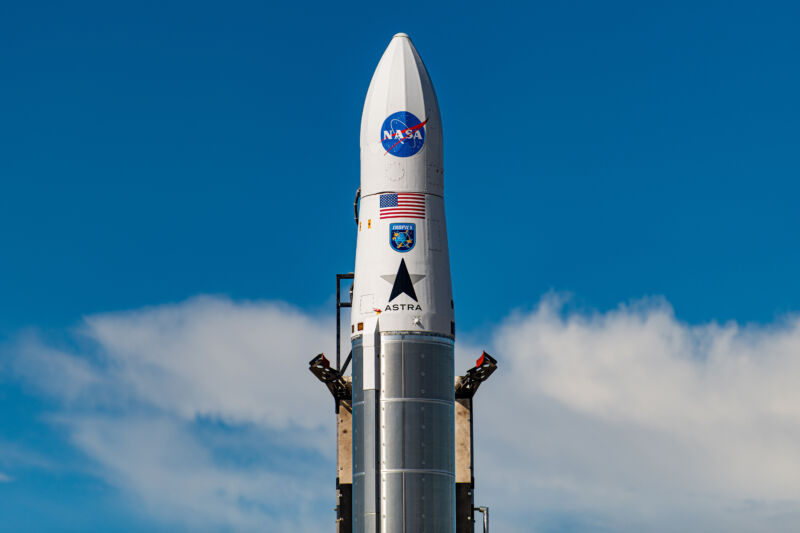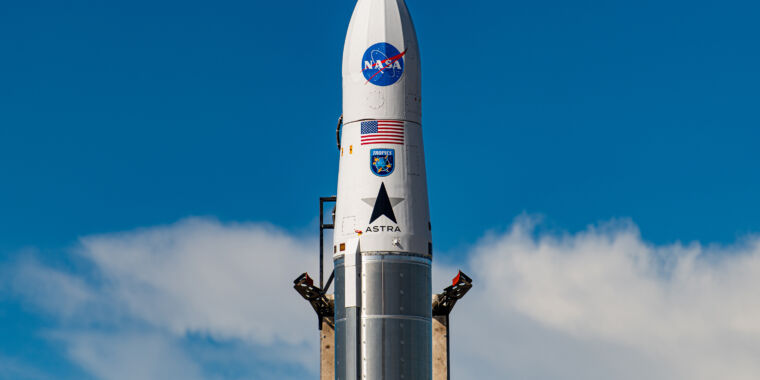
Astra/Brady Kenniston
Astra Space emerged from stealth mode two and a half years ago with a bold vision: It would build inexpensive rockets quickly and with a tolerance for some failure. The idea was simple. If Astra’s small satellite customers would accept a bit of risk, the launch company could cut down on its testing, analysis, and redundancy in design. In turn, Astra would pass those launch savings along to customers.
“It’s a no-brainer from an economics perspective that for these kinds of payloads, you should not be targeting 100 percent reliability,” Astra co-founder Adam London said in February 2020.
At the time, the company was preparing for the first flight of its Rocket 3 vehicle, a micro launcher capable of lofting about 50 kg into low Earth orbit. That rocket exploded in March 2020 during a wet dress rehearsal test on the launch pad.
Since then, Astra has attempted seven launches of its Rocket 3 vehicle. Only two of these seven flights were successful. Particularly embarrassing was the company’s most recent launch of Rocket 3 two months ago, when the upper stage shut down early, failing to put two tropical activity monitoring satellites into orbit for NASA.
Given all of this, Astra on Thursday announced a reset of its plans moving forward with regard to launch activity. The most recent failure appears to have catalyzed Astra to move in a new direction. In short, Astra will shift away from its previous mantra of being lean in terms of staffing, moving at breakneck speed, and being willing to tolerate failure in launch vehicles. It will also be going bigger in terms of its rocket size.
Astra CEO Chris Kemp announced the changes during a call with investors in the publicly traded company on Thursday evening after the US stock markets closed.
Big changes
“We’ve made a few key decisions,” Kemp said. “First, we’ve increased the payload capacity target for launch system 2.0 from 300 kg to 600 kg. Second, we’re working with all of our launch service customers to re-manifest on launch system 2.0. As such, we will not have any additional flights in 2022. And third, we’re increasing investments in testing and qualification which will add additional time and test flights to our schedule prior to resuming commercial launch operations.”
Let’s unpack this statement. Astra will no longer launch the largely unsuccessful Rocket 3. Instead, the company will now pivot to Rocket 4, which is also being called “launch system 2.0.” Additionally, the company will target a larger payload capacity for the new rocket, a move that Kemp explained is intended to make the booster more attractive to mega-constellation customers.
Astra has set ambitious targets for payload capacity (600 kg) and price ($5 million) for Rocket 4. This would be an attractive price for such a capability. As advertised, it would have about double the payload capacity of Rocket Lab’s Electron vehicle at two-thirds the price.








